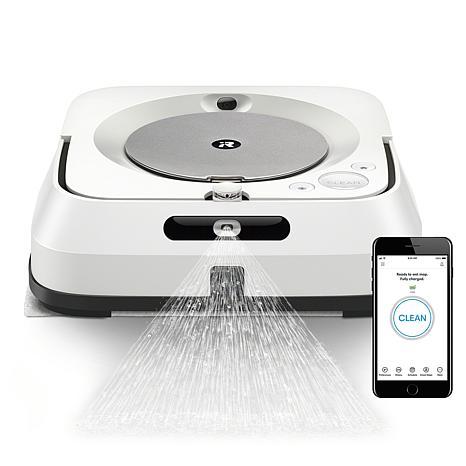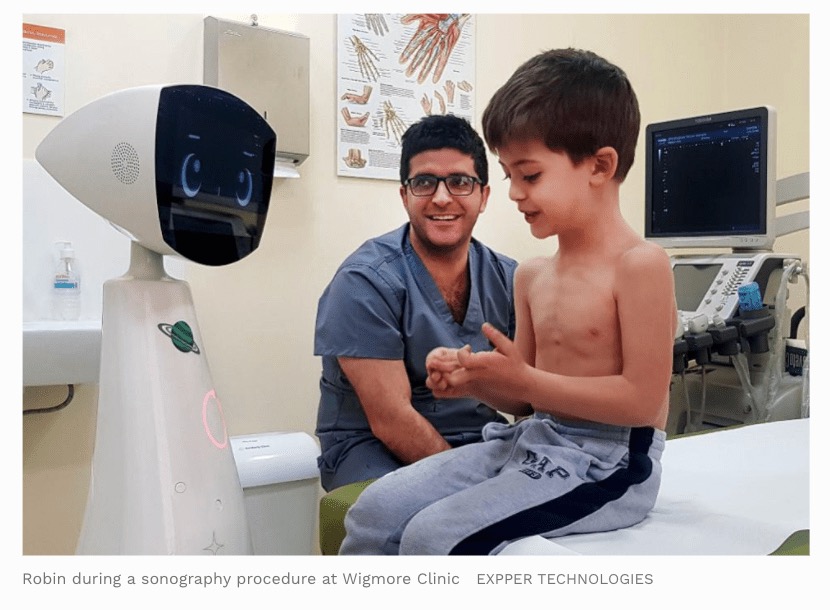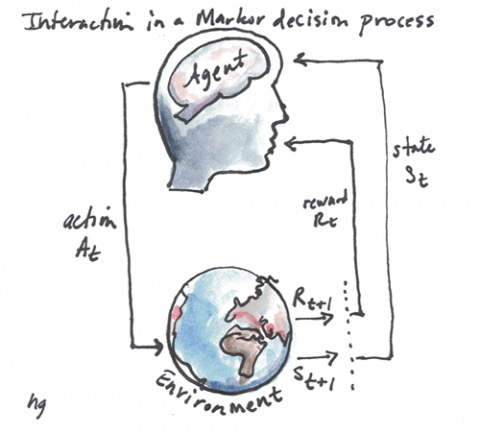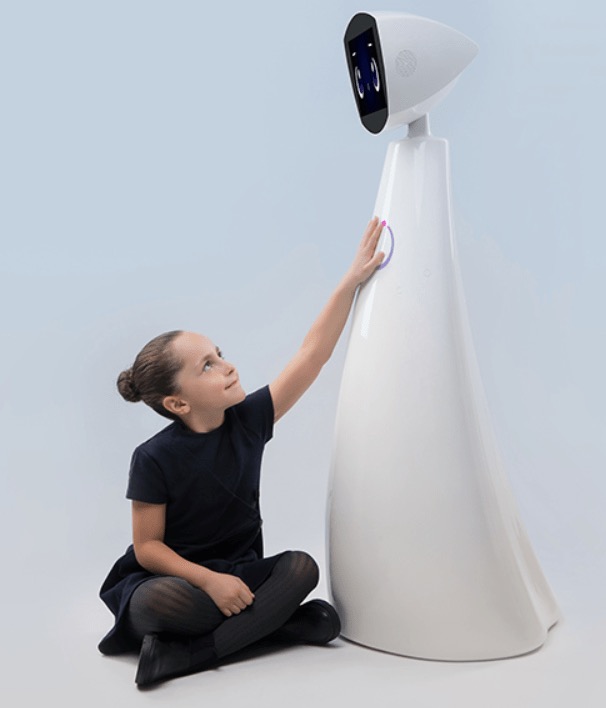The great lyric poet Billy Idol once sung “Eyes without a face, got no human grace, you’re eyes without a face.” This profound statement has been ringing loudly during this period of social distancing and masked encounters. As I professed on several webinars to understand the mechanics of reopening with robots, I have been challenged to explain the benefits of humanoid-looking devices over utilitarian machines.
This past week my family introduced a new mop into our cleaning closet, but this one demanded a name as part of the setup prompts. I have never thought of a kitchen utility in terms of endearment, but somehow my iRobot Braava jet is different. My kids now eagerly beg, “where is Suki?” never before showing interest in cleaning. Professor Sangseok You of HEC Paris explains “humans perform better with robotic teammates when they have a strong emotional attachment to them.”
This bond is most critical today inside hospitals as medical professionals grip with evolving forms of treatment. As the pandemic enters its fourth month in the United States, the new normal is challenging traditional caregiving structures with family members and nurses shielded from physically comforting patients. Children with chronic diseases have been most affected, reporting the largest spike in anxiety, stress, and isolation with the onset of COVID-19 visitation restrictions. In Armenia, a novel mechatronic company, Expper Technologies, is on the frontlines of pediatric mental illness with its new mechanical buddy, Robin. “We aim to change kid’s perception of medical treatments, where they will no longer feel isolated, lonely, and scared,” exclaims Expper’s founder, Karén Khachikyan. The innovator further explains how his whimsical four-foot robot employs digital facial expressions to form lasting bonds with its young users, “Robin utilized our AI-based patent-pending technology to build peer-to-peer emotional interactions with children.”
Its conversant personality is actually showing signs of improving patient wellbeing. In a study of 200 children in three different medical facilities, 26% of the patients reported an increase in “joyfulness” and 34% saw a significant reduction in stress. Khachikyan said, “We had cases where Robin decreased the time of medical procedures by up to 40% as children were less stressed and more cooperative.” Robin is more than just a novel piece of equipment, its personality is part companion, part social worker. Khachikyan describes, “Kids who stay in hospitals and have to undergo lengthy and sometimes painful treatment usually have a lack of appetite; some tend to be silent and apathetic. However, all the kids who have once interacted with Robin have shown interest in meeting it again. There were cases of improved appetite and an increase in cheerfulness after interactions with Robin.” The company believes that its success is directly linked to the ability to read a patient’s facial expressions and digitally engage the subject with a joke, game, or smile. “Robin is kind of an adorable buddy who is always there to support and help during the challenging times,” boasts the Armenian roboticist.
Nestled in the Silicon Valley of the former Soviet Union, Khachikyan designed Robin’s proprietary cognitive learning system based upon a deep understanding of psychological behavior therapy. As he elaborated to me this week, “Robin’s emotional expression system consists of various emotions with a variety of facial expressions depicting each emotion. Our patent-pending emotional intelligence technology allows Robin to express emotions and react naturally to situations and interactions with children,” The secret claims Khachikyan is in its dialogue architecture that is “modeled as a game, as an MDP (Markov Decision Process), more specifically, there are states, actions, rewards, etc.” He further outlines the engagement strategy, “The dialogue is framed as a 2 player positive-sum game, so the agent (Robin) gets a well-defined setting, also it’s positive-sum because the kid wants to receive positive emotions and Robin’s objective is to maximize that. Robin utilizes a reinforcement learning technique called self-play to further improve upon its capabilities.” This technique is significantly amplified by Robin’s ability to “remember the dialogues and individual features of a particular child.” The Armenia engineer modeled its cognitive abilities similar to how humans recall information, “Memory network allows Robin to store key points from interactions with each individual child and later remember that and bring back up in conversations.”
In illustrating the success of his humanoid-like device, the entrepreneur described how Robin interacted with an oppositional four-year-old patient. “During the pilot, we had a case when Robin met a 4-year-old girl Sarah. She had barely eaten anything in 2 days. She would refuse to walk around the ward or even talk with her family members. And the toughest task for everyone around had become to convince her to eat,” reflected Khachikyan. Robin quickly digested the problem and went into action: “After playing with her for a while and discussing what Sarah loved, Robin told her that he needed to recharge its battery. Robin told her that he would come back if she recharged herself as well. Having heard that from someone who had become a friend in a very short time convinced Sarah to start eating.”
As the world begins to reopen, the new reality has brought a breakdown in traditional emotional support structures. Khachikyan sees this as an opportunity for Robin to fill the void: “Because of the global pandemic children are much more isolated at the hospitals as the visitations have been strictly limited and the medical staff avoids interacting with patients for reducing the chance of spread of the virus. Hospitals are looking for solutions to help children cope with isolation, loneliness, and hospital-related stress. And Robin already showed its effectiveness in reducing stress and anxiety and supporting children at hospitals.” Furthermore, he stressed that “Robin’s external surface is made of eco-friendly bioplastic and can be easily sterilized with UV light or the other sterilizing materials.”
To date, Robin has been rolling across Armenia with plans to pilot its fleet of personality bots later this summer in California. “We are going to deploy Robin at ABC Kids Dental Group in LA on July 1st and in the next couple of weeks, we are bringing Robin to the UCLA Mattel Children’s Hospital,” boasts the founder. According to Khachikyan, UCLA will be specifically deploying the machines to help children cope with the current pandemic. He hopes that this will be expanded to affected geriatric populations. As more commercial installations begin embracing automation technologies, Expper proves that a smiling face makes a world of difference.







